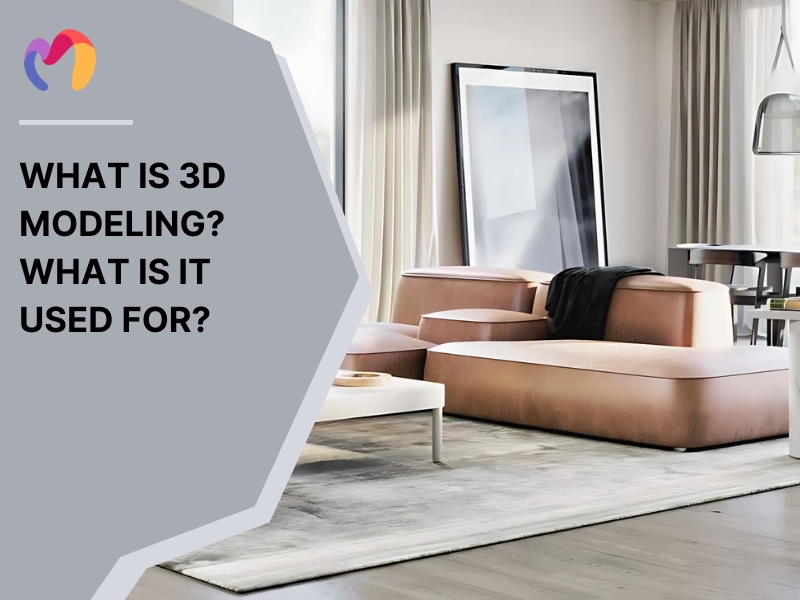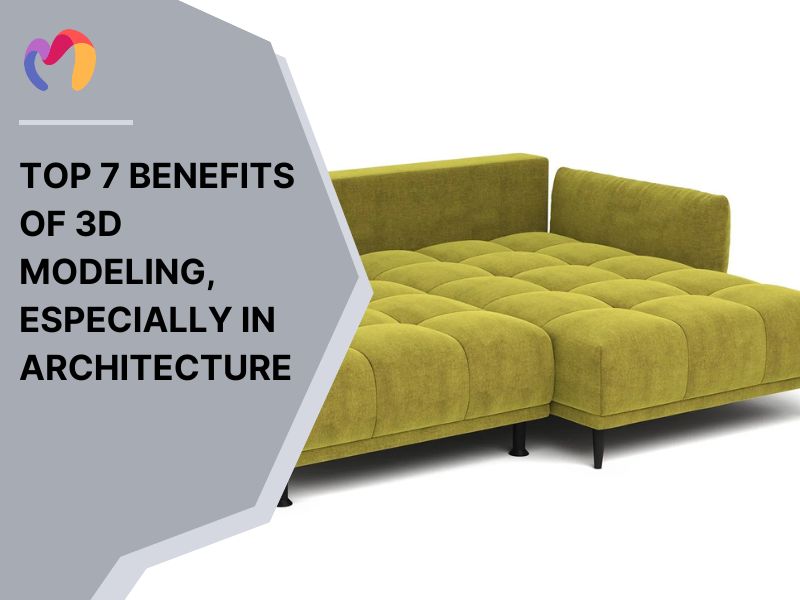What is 3D Modeling: Definition, Types, and Applications
What is 3D modeling? It is the process of building a digital replica of an object’s shape in three dimensions using software that manipulates edges, vertices and polygons. This method supports industries like interior and exterior design, architecture, engineering, animation, gaming and manufacturing by turning abstract ideas into visual assets. Designers and architects use these models to test, refine and present projects with clarity. This article explains the basics and real-world uses of 3D modeling, giving professionals practical knowledge of software tools, workflow methods and design standards that strengthen project visualization and client communication while transforming creative concepts into professional digital results.
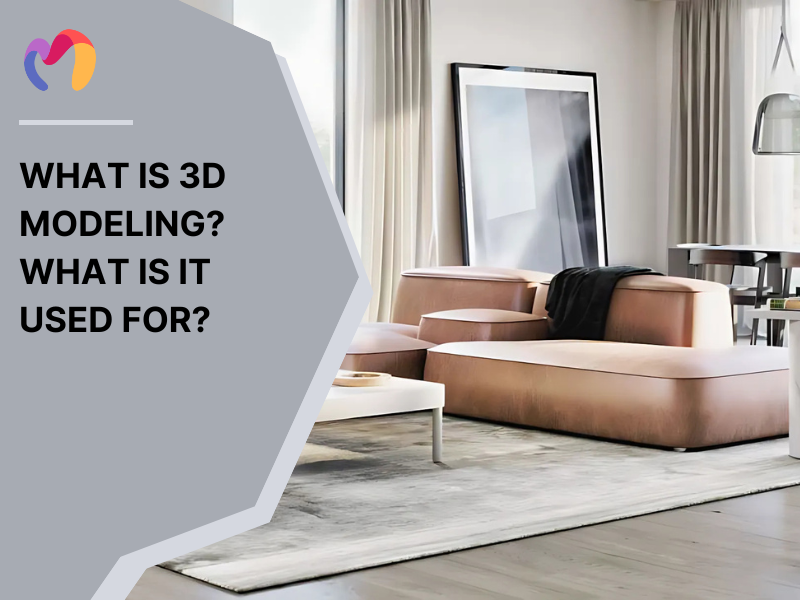
1. What is 3D Modeling?
3D modeling is the process of developing a digital representation of a three-dimensional object via specialized software by manipulating edges, vertices and polygons in a simulated 3D space (Source: Wikipedia). Three-dimensional models represent a physical body using a collection of points in 3D space, connected by various geometric entities such as triangles, lines and curved surfaces. The three dimensions of a 3D object refer to its height, width and depth.
The basic building blocks of 3D models typically include:
- Vertices: Points that define your model’s shape and establish coordinates within digital space
- Edges: Straight lines that connect the vertices and form the wireframe structure
- Polygons: Surfaces created by connecting the edges of your model or where two polygonal faces meet
During the 3D modeling process, designers determine an object’s size, shape and texture through mathematical calculations. The process works with points, lines, and polygonal surfaces to create geometric shapes within specialized software. Unlike 2D models, professionals can view 3D models from any angle and modify, scale, or rotate them within the modeling environment.
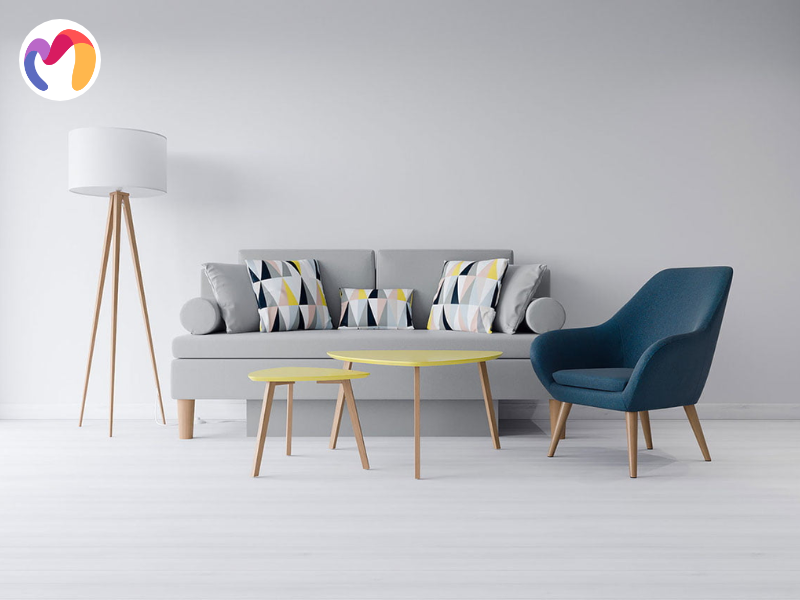
2. What are the Types of 3D modeling?
Designers work with six primary 3D modeling techniques that transform creative concepts into digital reality:
- Solid Modeling: A computer-based method used in CAD (computer-aided design) creates 3D solid objects from 2D sketches or geometric shapes, showing volume, surfaces, holes and voids for engineering calculations and manufacturing applications.
- Procedural Modeling: A technique in 3D computer graphics where 3D models and textures are created using a set of algorithms, rules, and mathematical functions, providing efficiency for large-scale environments, repetitive structures and landscapes.
- Wireframe Modeling: A basic representation method that uses points, lines, and curves to outline object edges without surfaces, defined by X, Y, Z coordinates for previews and reference geometry alignment.
- Surface Modeling: A specialized technique that focuses on creating smooth, complex exterior surfaces through lofting, sweeping, and extruding methods for mechanical parts and industrial design applications.
- NURBS Modeling: A mathematical modeling method that uses Non-uniform rational B-splines to create smooth 3D surfaces with curves, anchor points, and control points for precise automotive and engineering design.
- Polygonal Modeling: A mesh-based technique that uses connected polygons to provide direct control of vertices and faces, enabling highly detailed models for animation, video games, and film production.
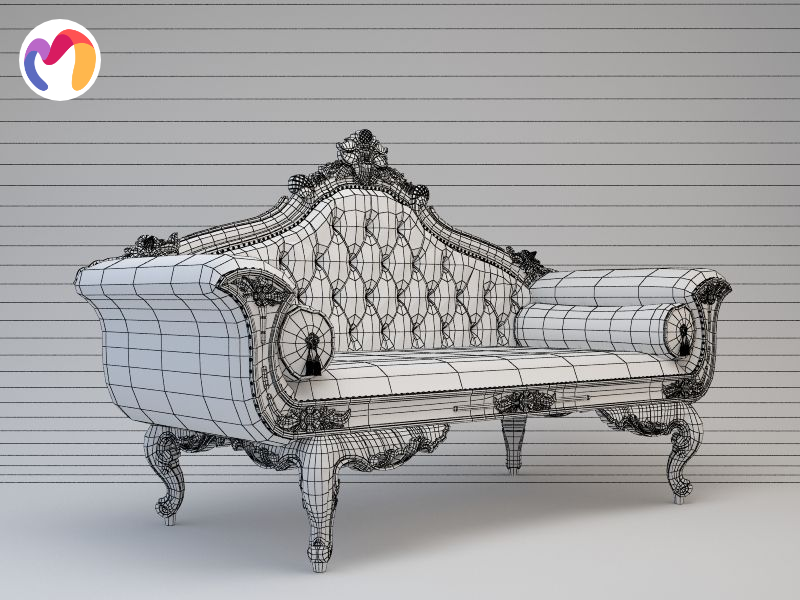

3. What is 3D Modeling Used For?
Professionals apply 3D modeling across six major industries that benefit from digital visualization and design capabilities:
- Interior and Exterior Design: Designers create precise visualizations that improve client communication through photorealistic models and virtual walkthroughs. Spatial optimization techniques can increase the usable area by up to 20%, while material selection using 3D technology reduces project costs by 30% through improved planning and reduced miscommunication.
- Architecture: Architects visualize complex building designs before construction begins, creating detailed, scalable models for planning and client presentations. This technology identifies structural issues preemptively, optimizes exterior integration with environmental factors, and streamlines the entire project lifecycle for modern building design.
- Game Development: Developers create immersive worlds, characters, props, and environments that enhance realism and player experience across all gaming genres. Performance optimization through the use of low-poly and high-detail assets supports virtual reality and augmented reality applications, enabling the creation of interactive and dynamic gaming worlds.
- Animation and Film: Studios rig and animate 3D models for movies and television productions, creating scenery, characters, and props for special effects. Seamless integration capabilities deliver clean visuals that support both animated and live-action productions with professional-grade results.
- Product Design: Engineers prototype and showcase products virtually, identifying errors before manufacturing begins, while visualizing size and scale relationships to ensure accuracy. This approach reduces waste in sample creation, supports sustainable design practices, and provides 360-degree presentations for investor demonstrations.
- 3D Printing: Manufacturers convert digital models into physical objects through rapid prototyping, which significantly reduces production time and costs. Healthcare applications produce custom prosthetics, implants, and surgical models, while the aviation and automotive industries benefit from stronger, lighter, and more durable manufactured components.
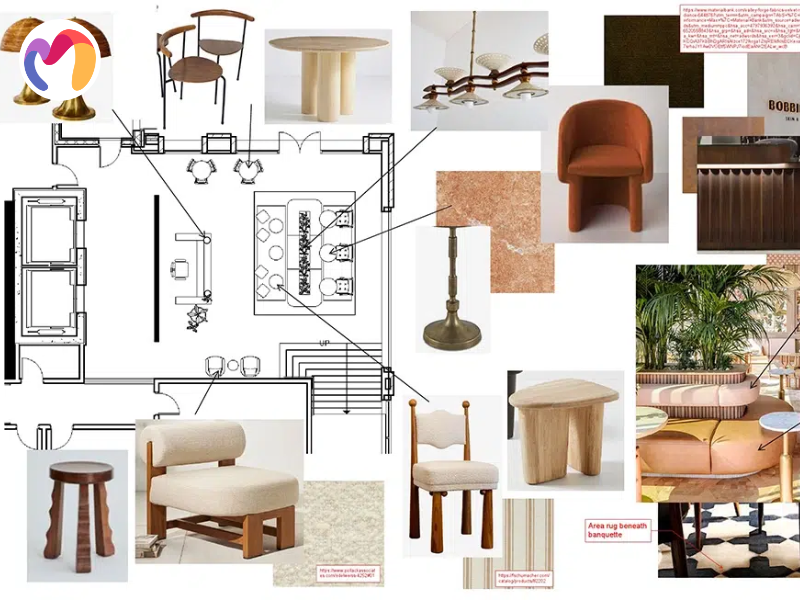

4. What is the process of 3D Modeling?
Artists follow eight sequential steps that transform initial concepts into finished 3D models ready for professional applications:
- Step 1 – Conceptualization and Planning: This stage lays the creative and technical foundation. Artists brainstorm ideas, gather references, and create storyboards or scripts to shape the project’s direction. They prepare technical specifications, measurements, and mood boards to set the tone. Both artistic style and technical requirements are defined early, ensuring a clear vision before modeling begins.
- Step 2 – Blockout and Base Modeling: The process starts with building simple primitives (cubes, spheres, cylinders) to establish major forms, mass, and proportions. This blockout phase defines the silhouette and layout for fast iteration. From there, artists refine the geometry by manipulating edges, vertices, and surfaces through poly-modeling or digital sculpting. The focus is on mesh structure, clean topology, and balancing detail with performance for future animation or rendering.
- Step 3 – Detailing and Geometry Refinement: Once the base is solid, the model moves into detailed sculpting. Artists refine shapes, add surface complexity, and create high-frequency details such as wrinkles, scratches, or ornate features. Techniques often combine poly-modeling with digital sculpting tools for organic or intricate designs. Retopology is performed at this stage to optimize the mesh, ensuring efficient geometry for animation and real-time rendering.
- Step 4 – UV Mapping and Texturing: The 3D model is unwrapped onto a 2D texture space, where UV shells are logically arranged for easy painting. Symmetry and region mapping help maintain efficiency. Artists then create and apply texture maps to define surface properties like smoothness, roughness, shininess, or bumpiness. With PBR (Physically Based Rendering) workflows, materials mimic real-world surfaces, while optimized resolution keeps performance stable.
- Step 5 – Integration, Testing, and Rendering: The final stage ensures the model functions in its target environment. Artists export the model in the required format, integrate it into game engines or rendering software, and test animations, physics, and Levels of Detail (LODs). Adjustments are made for visual quality and system performance. Once validated, lighting, shadows, and effects are added to produce high-quality stills or animations for film, games, architecture, or manufacturing.
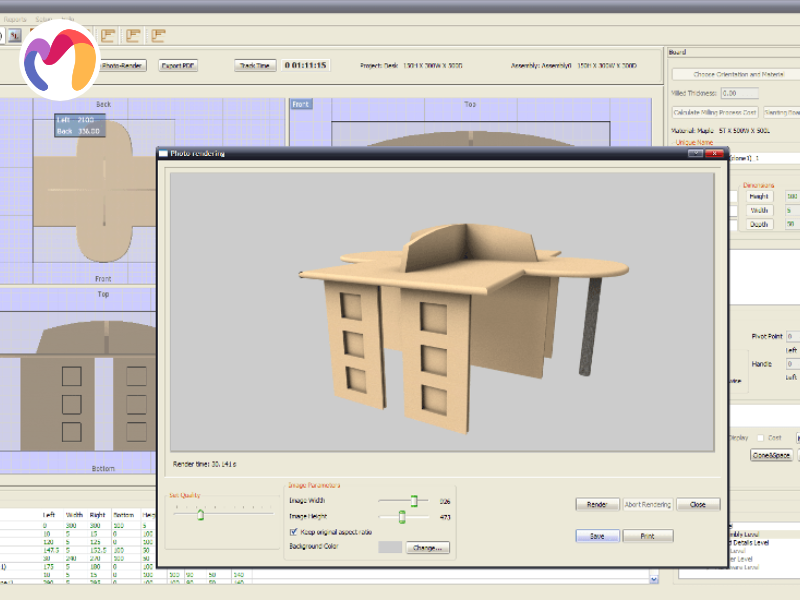

5. What are the recommended 3D Modeling Software?
Professionals choose from four industry-leading 3D modeling software applications that serve different design needs and project requirements:
- Autodesk 3ds Max: A professional 3D modeling, rendering and animation software enables the creation of realistic architectural visualizations and product prototypes. Advanced modeling tools, non-destructive modifiers, integrated Arnold renderer, and MAXScript automation support comprehensive design workflows for creative professionals.
- Blender: A free, open-source 3D suite that supports the entire pipeline, from modeling through rendering and compositing. Advanced sculpting tools, geometry nodes for procedural modeling, Cycles and Eevee rendering engines and strong community support make this cross-platform solution accessible.
- AutoCAD: A CAD software that specializes in 2D drafting and 3D modeling for architects, engineers and product designers. Wireframe, surface, and solid modeling capabilities, along with parametric design features, collaboration tools and industry-specific toolsets, support professional technical drawing requirements.
- Autodesk Maya: An industry-standard animation and VFX software used in film, television and game development projects. Powerful polygon and NURBS modeling, advanced rigging tools, Bifrost simulations, LookdevX material authoring, and integrated Arnold renderer deliver professional production capabilities.
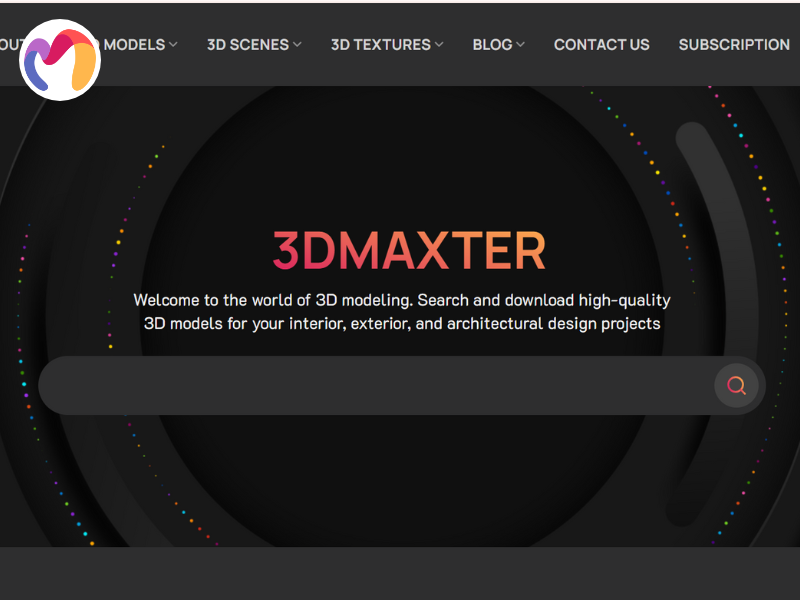

| Discover hundreds of free 3D models and elevate your next project — start exploring now! | |||
  |
  |
  |
  |
| Furniture 3d model | Lighting 3d model | Plants 3d model | Decoration 3d model |
6. Frequently Asked Questions about 3D Modeling
What is 3D Solid Modeling?
Solid modeling represents the computer-based creation of 3D solid objects with mathematically defined surfaces and volumes. This technique produces geometrically accurate models that maintain consistent surface integrity, enabling engineers to perform precise structural calculations, simulations, and manufacturing analyses.
What Is Topology In 3D Modeling?
Topology defines the structural arrangement of vertices, edges, and faces that form the surfaces of 3D models. This framework serves as the blueprint for model construction, determining how geometry flows and connects while preventing unwanted distortion during manipulation, animation, or modification processes.
What Is A Polygon In 3D Modeling?
Polygons serve as fundamental building blocks in 3D modeling, consisting of flat, multi-sided shapes that define the surfaces of objects. These geometric elements typically appear as triangles or quadrilaterals, formed by connecting at least three vertices and edges to create closed shapes.
What Is A Mesh 3D Modeling?
Mesh modeling creates digital surface representations through interconnected corner points, edges, and polygonal sections. This structure utilizes vertices as coordinate references, while edges connect neighboring points, forming a complete geometric framework that defines the surfaces and shapes of three-dimensional objects.
What Is A Rigged 3D Model?
Rigged models contain internal skeletal structures composed of interconnected joints and bones that control the movement and deformation of objects. Artists create these digital skeletons to animate characters and objects, allowing realistic motion similar to how biological skeletons enable body movement and articulation.
What Is A Spline In 3D Modeling?
Splines represent mathematical curves in three-dimensional space, technically classified as B-Splines (basis splines) that connect multiple control points. NURBS (Non-Uniform Rational Basis Spline) technology enables designers to create smooth, precise curves and surfaces for organic modeling and technical design applications.
What Is LOD In 3D Modeling?
Level of Detail (LOD) systems optimize 3D model complexity for real-time rendering in games and interactive applications. This technique reduces polygon counts and texture resolution as objects move farther from the camera, maintaining visual quality while improving performance.
What Are Low-Poly 3D Models?
Low-poly models feature polygon meshes with minimal geometric complexity, using fewer triangular faces compared to high-resolution counterparts. These simplified models serve real-time applications, such as games and mobile apps, in contrast to the detailed meshes used in films and special effects production.
What Is Rendering In 3D Modeling?
Rendering transforms 3D models into photorealistic 2D images through computational processing that calculates lighting, shadows, and material properties. This final visualization step converts digital geometry, textures, and scene lighting into realistic images suitable for presentations, marketing materials, and client approvals.
What Is Texturing In 3D Modeling?
Texturing applies visual details including colors, patterns, and surface properties, to 3D models for enhanced realism and appearance. Artists wrap 2D images or procedural materials around three-dimensional geometry, adding depth, visual interest, and authentic surface characteristics to digital objects.
What is the best 3D Modeling software for beginners?
3ds Max offers beginners an ideal combination of user-friendly interface, powerful modeling tools, extensive learning resources, and industry recognition. This software particularly benefits those pursuing careers in interior, exterior, and architectural design through its specialized toolsets and professional workflow capabilities.
Can I use 3D Modeling for Interior design?
Interior designers benefit significantly from 3D modeling technology for space visualization, furniture arrangement, and client presentations. This approach enables realistic room previews, material selection testing, lighting simulation, and virtual walkthroughs that improve design accuracy and client communication before construction begins.
7. Conclusion
This guide explained what is 3D modeling, its core techniques, industry uses and software tools that help professionals improve project visualization and client communication across interior, exterior and architectural design. Readers gained insights into workflows and technical methods that support accurate design presentations. 3DMAXTER’s professional model library supplies precision-built assets in native 3ds Max (.max) with .obj and .fbx export options, allowing smooth integration across platforms. With varied specifications, strong quality standards and fair pricing, these digital models give architects and designers reliable resources for their work. Download professional-grade assets to enrich architectural visualization projects with realistic, detail-focused 3D content.
3DMAXTER LTD
- Email: [email protected]
- Phone: +1 (929) 450-2898
- Address: 95-38 Queens Blvd, Rego Park, NY 11374, USA
